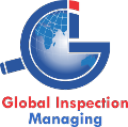In our ever-evolving world, where technology reigns supreme, we often marvel at the gadgets and devices that simplify our lives. From smartphones that keep us connected to electric vehicles that promise a greener future, we are surrounded by a cornucopia of electronic wonders. However, beneath the sleek exteriors of these devices lies a hidden concern – the potential environmental and health hazards posed by the materials used in their production. This is where RoHS compliance steps in as the guardian of our well-being and the planet’s health. RoHS, or Restriction of Hazardous Substances, is not just a regulatory requirement; it is a moral imperative that ensures the responsible and sustainable production of electronics. In this blog, we will delve into the importance of RoHS compliance, shedding light on its significance for individuals, the industry, and the environment.
RoHS Compliance: A Brief Overview
RoHS, originating in the European Union, stands as a symbol of the global commitment to environmental protection. Officially known as Directive 2002/95/EC, it restricts the use of hazardous substances in electrical and electronic equipment (EEE) production. Compliance with RoHS is a legal requirement in many countries, with penalties for non-compliance ranging from hefty fines to product recalls.
Key Elements of RoHS Compliance
Navigating the intricacies of RoHS compliance requires a fundamental understanding of its key components. There are some essential elements that form the foundation of RoHS regulations. These critical aspects serve as a compass for businesses and individuals alike, ensuring responsible electronics manufacturing and a sustainable future.
Restricted Substances:
RoHS testing primarily targets six hazardous substances that are commonly found in electronic products. These restricted substances include:
- Lead (Pb)
- Mercury (Hg)
- Cadmium (Cd)
- Hexavalent Chromium (CrVI)
- Polybrominated Biphenyls (PBB)
- Polybrominated Diphenyl Ethers (PBDE)
Maximum Allowable Concentrations:
RoHS specifies the maximum allowable concentrations of these hazardous substances in electrical and electronic equipment. For instance, the directive restricts lead to no more than 0.1% by weight in homogeneous materials.
Scope of Application:
RoHS applies to a wide range of electrical and electronic equipment testing, including but not limited to:
- Consumer electronics (e.g., smartphones, laptops, and televisions)
- Household appliances (e.g., refrigerators and washing machines)
- Lighting equipment
- Medical devices
- Industrial machinery
Methods to Ensure RoHS Compliance
Achieving RoHS compliance demands a diligent and multifaceted approach. Here are the various quality control methods that organizations employ to ensure adherence to RoHS regulations. These strategies are pivotal in guaranteeing that products, processes, and supply chains remain in alignment with environmental standards.
- Materials Assessment and Substitution: Evaluate materials, identify restricted substances, and seek alternative materials that meet regulatory and performance criteria.
- Supply Chain Traceability: Implement robust supply chain traceability to track materials and ensure supplier compliance.
- Testing and Inspection Protocols: Conduct regular product testing using state-of-the-art analytical methods to confirm compliance.
- Documented Records and Reporting: Maintain comprehensive records, including material declarations, compliance certificates, and testing reports.
- Employee Training and Awareness: Educate the workforce on regulatory requirements and foster an environment of environmental responsibility.
- Continuous Monitoring and Auditing: Perform different types of audits including internal audits to identify areas of improvement and take corrective actions.
- Supplier Engagement and Collaboration: Collaborate with suppliers to encourage environmentally responsible practices and RoHS compliance.
- Regulatory Updates and Adaptation: Stay abreast on regulatory changes and adapt swiftly to new requirements.
- Certifications and Labeling: Obtain RoHS compliance certifications or labels to enhance transparency and customer confidence.
Significance of RoHS Compliance
RoHS compliance holds a critical position in the realm of modern electronics manufacturing. It transcends borders and industries, addressing core concerns related to environmental sustainability, human well-being, and global market dynamics.
The Environmental Impact
RoHS compliance is, fundamentally, an environmental endeavor. It seeks to diminish the adverse environmental effects of hazardous substances in EEE throughout their lifecycle. For instance, the removal of lead prevents its release into the environment during the disposal and recycling of electronic products. Lead is notorious for contaminating soil and water, posing severe health risks to both humans and wildlife.
Furthermore, RoHS compliance promotes recycling and responsible electronics disposal, preventing them from becoming e-waste. Electronic waste is a growing problem worldwide, as discarded devices often contain toxic materials that can leach into the environment. By adhering to RoHS regulations, manufacturers contribute to a sustainable future by minimizing the environmental footprint of their products.
The Health Implications
Beyond environmental concerns, RoHS compliance safeguards human health. Many of the restricted substances in EEE have known adverse health effects. Lead exposure, for instance, can lead to developmental issues in children, cognitive impairments, and even death. Cadmium is a known carcinogen, while mercury can cause neurological damage, particularly in pregnant women and young children.
By eliminating these hazardous substances from electronic products, RoHS compliance ensures that the devices we use daily pose fewer health risks to both consumers and those involved in their production. This isn’t just about complying with regulations; it’s about putting human health at the forefront of technological advancements.
Market Access and Reputation
In an increasingly competitive global market, RoHS compliance is not just a legal obligation; it’s a ticket to trade. Many countries and regions require products to meet RoHS standards to be sold within their borders. Manufacturers who fail to comply find themselves shut out of lucrative markets, severely limiting their reach and potential for growth.
RoHS compliance enhances a company’s reputation. In a world where consumers are becoming more conscious of environmental and ethical issues, a reputation for producing environmentally friendly and safe products can be a significant selling point. Customers are more likely to trust and choose brands that prioritize RoHS compliance, viewing them as responsible corporate citizens.
Cost Savings and Efficiency
One might argue that RoHS compliance adds an extra layer of complexity and cost to manufacturing processes. While it’s true that initial adjustments may require investment, long-term benefits far outweigh the initial expenditures. By eliminating hazardous substances, manufacturers can reduce the need for costly waste management, disposal, and recycling processes associated with toxic materials.
Moreover, RoHS compliance often leads to more efficient production methods. Manufacturers are encouraged to find alternatives to restricted substances, which can result in improved product performance and reduced energy consumption. This efficiency not only saves money but also aligns with broader sustainability goals.
Innovation and Research
RoHS compliance drives innovation in the electronics industry. As manufacturers seek alternatives to restricted substances, they invest in research and development, spurring technological advancements. This, in turn, leads to the creation of safer, more efficient, and environmentally friendly electronic products.
Innovation is not limited to the private sector. Governments and regulatory bodies also play a role by continuously updating RoHS directives to reflect scientific advancements and emerging concerns. This ensures that the industry remains at the forefront of environmental and health protection.
How GIM Can Help You With RoHS Compliance Audit
When it comes to RoHS, factory audit, food inspection, garment quality control, and other checks, we understand the diverse landscape of compliance requirements. At the core of these endeavors lies the critical step of auditing, and ensuring that your products and processes adhere to stringent regulations can be a complex and challenging endeavor. This is where Global Inspection Managing steps in as your trusted partner.
With our expertise and experience in conducting RoHS compliance audits and a wide range of other inspection and quality control services, we provide a comprehensive and tailored approach to help your organization meet and exceed regulatory requirements. Our team of skilled professionals understands the nuances of various compliance standards, including RoHS, food quality control, and garment quality.
We ensure that your products not only meet the necessary standards but also contribute to a more sustainable and environmentally responsible future.
Conclusion
In a world where electronic devices have become ubiquitous, the importance of RoHS certifications cannot be overstated. It is a powerful force driving the industry towards sustainability, responsible manufacturing, and innovation. As consumers, we must support and prioritize RoHS-compliant products, and as manufacturers, we must embrace these regulations not as hurdles but as opportunities to create a brighter, safer, and more sustainable future for all. RoHS compliance is not a choice; it is a responsibility we owe to ourselves, future generations, and the planet we call home.

